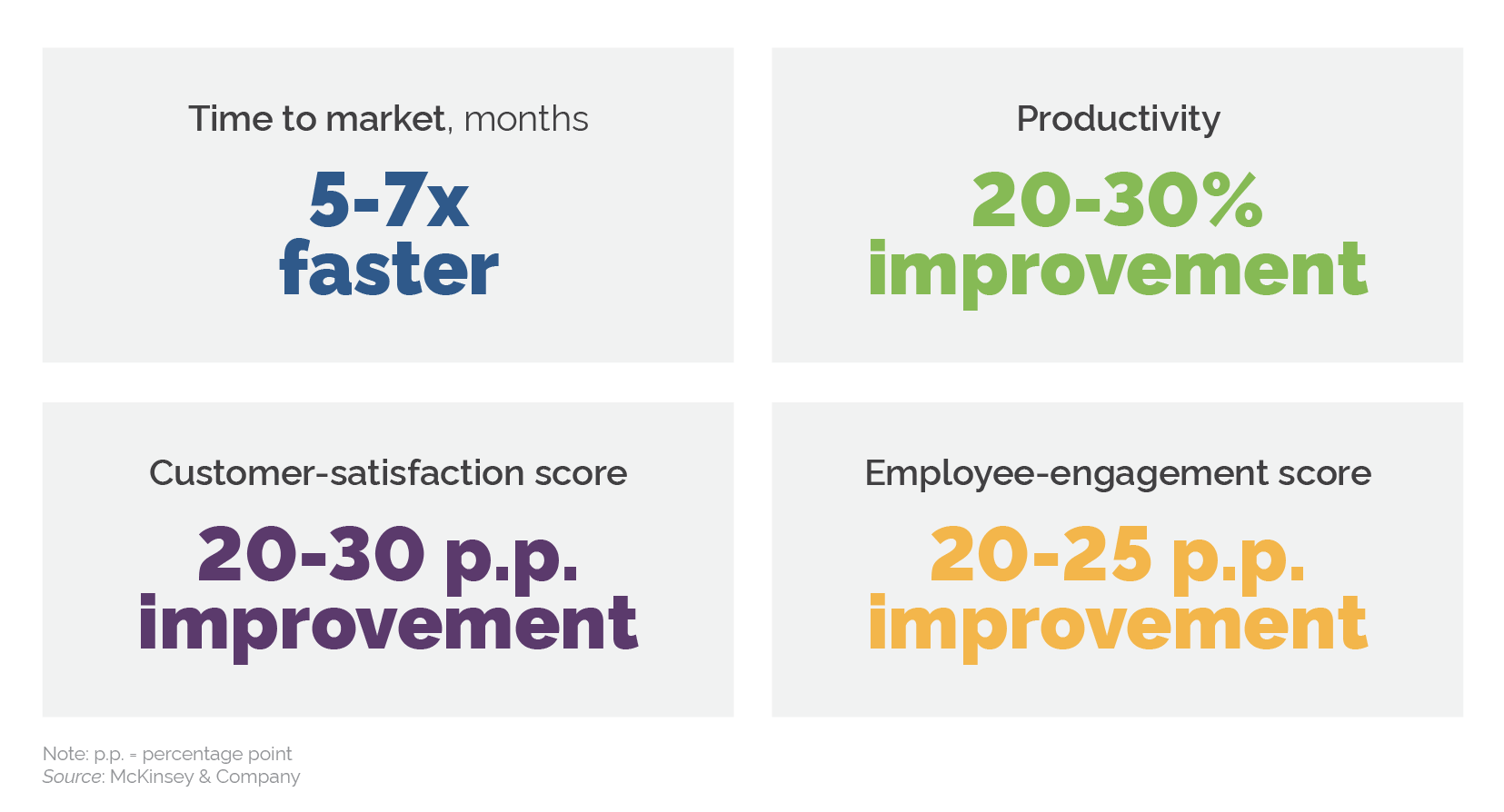Introduction
The group insurance industry continues to look for ways to improve its competitive positioning with a focus on replacing core systems for increased market agility, reduced operational expenses, and enhanced customer experiences. Selecting the right platform and partner is critical to success in these transformations. The platform must have robust out-of-the-box capabilities to lessen the client-side business effort. It should also have a low-code configuration environment that allows for fast implementations, and be cloud-native to enable an easy and rapid upgrade process.
How your transformation partner delivers also matters; large, multiyear initiatives are no longer acceptable. Insurance platform replacement delivery needs to be incremental in terms of business capability and value to facilitate rapid implementations. As a result, carriers and solution providers continue to invest in Agile capabilities to achieve accelerated speed to market delivery.
Agile Ascendancy
Agile is part of a management trend toward decentralized decision-making and loose governance where teams are outcome-driven rather than task-managed.i If done correctly, Agile can result in improved quality, tighter alignment between business and IT, and lower costs and risks than more traditional “big bang” programs. A basic Agile component is delivering the highest-priority items first with a minimally viable product (MVP). Not only does Agile accelerate speed to market, but it also has higher product delivery success rates. Chart 1 illustrates some of the optimal results that can be achieved through Agile implementations.
Chart 1: Agile Companies Show Superior Operational, Health, and Financial Results
While Agile is well established across the industry, firms are at different levels of maturity, and expected growth rates continue to increase. Most firms start small with pilot programs to test and learn the method, teaming, and governance. Today, we are seeing focus and investments in scaling with frameworks such as SAFe (Scaled Agile Framework). With SAFe comes a more robust definition of the product owner role. The more robust role involves a transition from developer/project manager/business analyst to business-focused resources responsible for strategy and decisions over the entire product life cycle. A third area of focus and expansion is Agile DevOps, where the principles of Agile are extended into IT operations.
Agile Adoption Fundamentals
Adopting Agile and getting the promised results is as much a cultural transformation as it is a change in software delivery methodology. Some of the following practices have been leveraged to achieve the benefits of Agile:
- Treat Agile adoption as a change management initiative. Conduct comprehensive training early in the program, including executive management, business, and IT stakeholders.
- Phase the Agile roll-out by starting small, piloting initial programs, building momentum and success as lessons are learned.
- Build business stakeholder understanding and commitment. There can be push-back from the business on some of the ambiguous aspects of fuzzy requirements and MVP.
- Flexible funding and governance models. Funding and resources should be aligned with the product teams, and the organization should be able to reallocate resources as priorities change.
Many organizations start with a hybrid Agile model or iterative development approach to facilitate the cultural transformation and business buy-in required to get desired outcomes.
Vitech’s Approach
Vitech’s use of hybrid Agile models for insurance platform implementations facilitates greater team collaboration and significantly improved time to market. For a large group insurance company, Vitech implemented a core hospital indemnity product in six months for what would have been historically a nine- to 12-month project. The hybrid Agile model helped divide the project into more manageable sections (sprints) and set clear objectives for the duration of implementation. The project was completed through a series of five-week sprints, with ongoing client input and greater satisfaction on completion.
Final Thoughts
In group insurance, successful companies need to look at new methodologies and processes to get their products to the market quickly, to beat the competition and as another key differentiator. When implemented correctly, Agile can deliver improved software quality, tighter alignment with business objectives, and lower cost and risk. Obtaining these results requires formal change management disciplines. The tangential value of Agile is an organization’s cultural shift to focus on innovation, while energizing its workforce by more collaborative, empowered, and swifter ways of completing complex implementations.
i “Agile in Insurance: Expansion and Key Issues,” Novarica, January 2019
